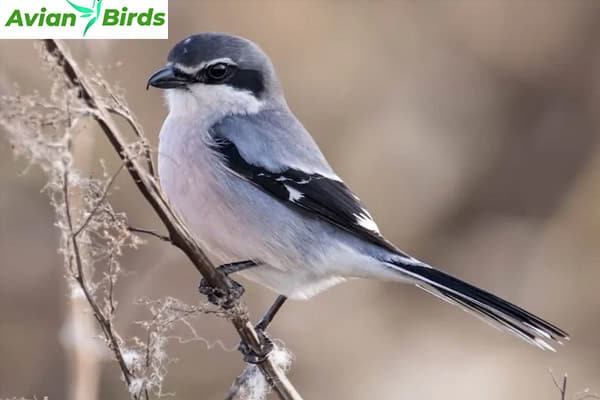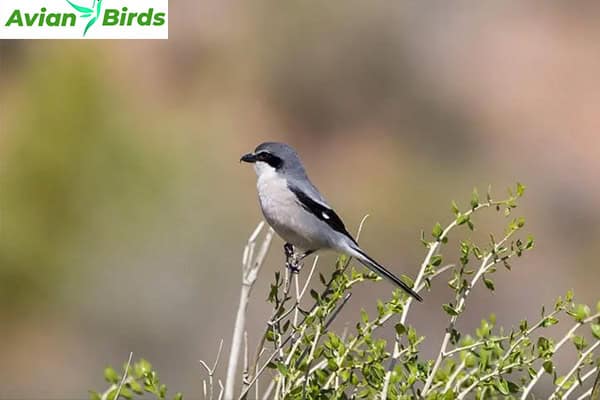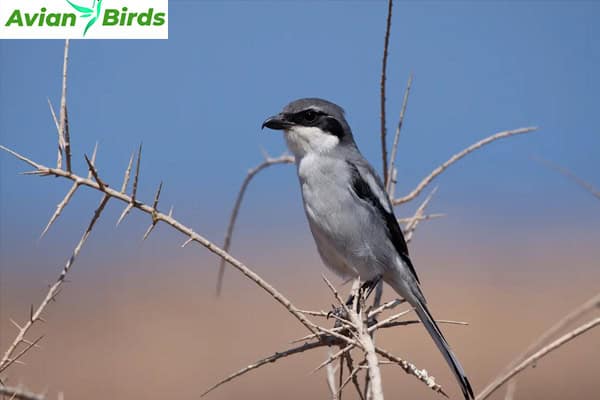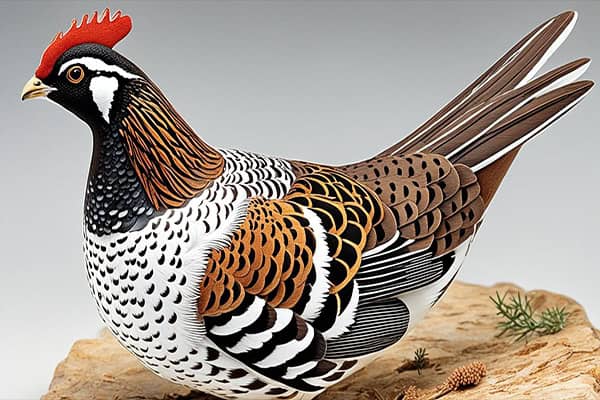Southern Grey Shrike: The Butcher Bird of Europe
Have you ever heard of the “butcher bird” of Europe? This fearsome creature is the southern grey shrike (Lanius meridionalis). It’s a small but mighty predator found in the Iberian Peninsula, France, and parts of Italy. But what makes this bird so unique, and why is it called the “butcher bird”? Let’s dive in and explore the fascinating world of the southern grey shrike.
~Here we’ll learn about Southern Grey Shrike (The Butcher Bird of Europe)~
Fun Facts
- Scientific Name – Lanius meridionalis
- Weight – 55 to 80 grams
- Length – 22 to 26 cm
- Wingspan – 30 to 34 cm
- Lifespan – Up to 8 years and 2 months
- Diet – Insects, small mammals, reptiles, birds, and amphibians
- Habitat – Agricultural areas, hedgerows, swamps, and wetlands
1. Appearance and Identification
The Southern Grey Shrike is a sleek and elegant bird with a bold, contrasting color pattern. It has a pale gray back, a white underside, and distinctive black markings, including a bold mask that runs across its eyes and down to its beak. Its wings are black with a white flash that is visible during flight, while its long, black tail adds to its streamlined silhouette.

Males and females look similar, making it challenging to differentiate them by sight alone. The shrike’s sharp, hooked beak is an unmistakable feature, well-adapted to its carnivorous diet.
2. Habitat and Distribution
This bird is native to the southern parts of Europe, North Africa, and parts of the Middle East. It thrives in open habitats such as scrublands, semi-deserts, and agricultural fields, where it can perch on tall shrubs, trees, or man-made structures like power lines to survey its territory.

The Southern Grey Shrike is a year-round resident in most of its range, although some northern populations may migrate short distances in winter to avoid harsh weather.
3. Hunting and Diet
Despite its small size, the Southern Grey Shrike is a formidable predator. It primarily feeds on insects, small mammals, birds, and reptiles. What sets this bird apart is its unique method of storing food. The shrike is known for impaling its prey on thorns, sharp twigs, or even barbed wire, creating a gruesome larder from which it can feed over time. This behavior has earned it the moniker “butcher bird.”

The shrike’s keen eyesight allows it to spot prey from a distance. Once it locates its target, it swoops down with speed and precision, using its powerful beak to deliver a fatal blow. Its hunting prowess is impressive, making it one of the top predators in its habitat despite its size.
4. Breeding and Nesting
During the breeding season, which typically occurs from March to July, the Southern Grey Shrike becomes even more territorial. Males perform elaborate displays, including singing and aerial acrobatics, to attract a mate. Once paired, the female builds a cup-shaped nest in a bush or tree, where she lays 4 to 6 eggs.
Both parents take part in feeding the chicks, which fledge after about three weeks. The young shrikes learn to hunt and fend for themselves within a few months, gradually becoming independent.
5. Conservation Status
The Southern Grey Shrike is not currently considered endangered, but like many species, it faces threats from habitat loss and changes in land use. Agricultural intensification and urbanization can reduce the availability of suitable hunting grounds and nesting sites. Conservation efforts that focus on preserving open habitats and traditional farming practices can help ensure the continued survival of this remarkable bird.

6. Fascinating Behavior
One of the most fascinating aspects of the Southern Grey Shrike is its complex vocalizations. While it may not be as melodious as other songbirds, the shrike has a varied repertoire of calls and songs that it uses to communicate with others and establish its territory. Some of these calls mimic the sounds of other birds, adding another layer of intrigue to their behavior.
The Southern Grey Shrike also exhibits a remarkable memory. It often returns to the same hunting grounds and perches, relying on its knowledge of the landscape to locate prey efficiently. This combination of intelligence, adaptability, and ferocity makes the shrike a truly unique bird.
7. Hunting Techniques
The southern grey shrike uses different ways to hunt its food. It often sits high up, watching for prey. Then, it quickly swoops down to grab its food with its sharp beak and claws.

Or, it waits in hiding, ready to strike when the time is right. No matter the method, the shrike is very good at hunting. It can live in many different places and environments.
Wrapping Up…
The Southern Grey Shrike is a small bird with a big personality. Its striking appearance, formidable hunting skills, and unique behaviors make it a standout species in the avian world. Whether you’re a seasoned birdwatcher or a casual nature enthusiast, spotting a Southern Grey Shrike in the wild is a memorable experience that showcases the wonders of the natural world.







